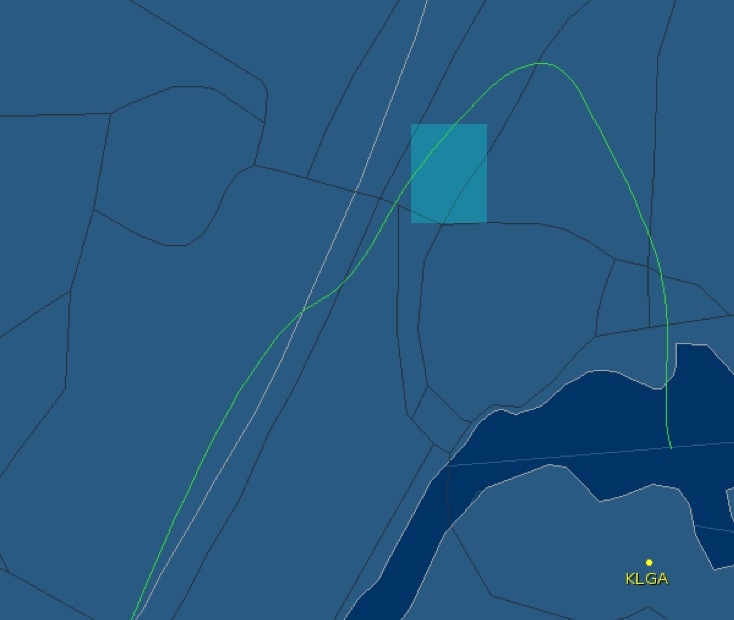That’s almost as far as it got.
Trending topics: Hudson River, Charlotte, Shorty Awards Finals, A US Airways, New York’s Hudson, LaGuardia, USAirways, Plane, MSNBC, Manhattan
FLIGHTAWARE BREAKING NEWS
US Airways flight #1549 (an Airbus A320) from New York, NY (LGA) to Charlotte, NC (CLT) crashed into the Hudson River today (January 15, 2009) around 3:30pm EST, less than six minutes after takeoff. The maximum altitude was 3200 feet before the aircraft began a descent into the water.
Plane appears intact. Helicopters and ferries responding. FAA is reporting all passengers are out of the plane, and a secondary search is underway.
Early unconfirmed reports are that the aircraft hit a flock of geese. CNN reports that a pilot of the airliner reported a bird strike to air traffic control after takeoff.
Developing.
Related Links
FlightAware Discussion Forums: Airliner Down
If FlightAware calls the flight USA1549, that’s how I’m going to call and tag it.
More as I can write about it, sitting here at a pharmacy in Cambridge. As of now, it appears that all passengers and crew got out alive. Amazing. Some great piloting there. And a sobering lesson in listening to pre-flight safety pitches.
Reallhy helps that the plane stayed intact (from what we can see). Amazing job landing — actually, ditching — the thing. Wow.
5pm, on FlightAware:
|
|
||
|---|---|---|
| Aircraft | Airbus A320 (twin-jet) (A320/Q) | |
| Origin | La Guardia (KLGA) | |
| Destination | Charlotte/Douglas Intl (KCLT) | |
| Other flights between these airports | ||
| Route | BIGGY J75 GVE LYH SUDSY3 (Decode) | |
| Date | Thursday, Jan 15, 2009 | |
| Duration | 1 hours 44 minutes | |
| Progress |
11 minutes left
|
|
| Status | En Route (No recent position) | |
| Scheduled | Actual/Estimated | |
| Departure | 03:04PM EST | 03:26PM EST |
| Arrival | 04:38PM EST | 05:10PM EST |
| Speed | 455 kts | 153 kts |
| Altitude | 36000 feet | |
Want to get that down before it scrolls away.
How long before video of the plane landing, shot from a ferry or shore, shows up on the tubes?
From a FlightAware post, ship number 106 (N106US, Airbus A320-214, delivered August 2, 1999)
Jumping in the subway now. More later.

Leave a Reply